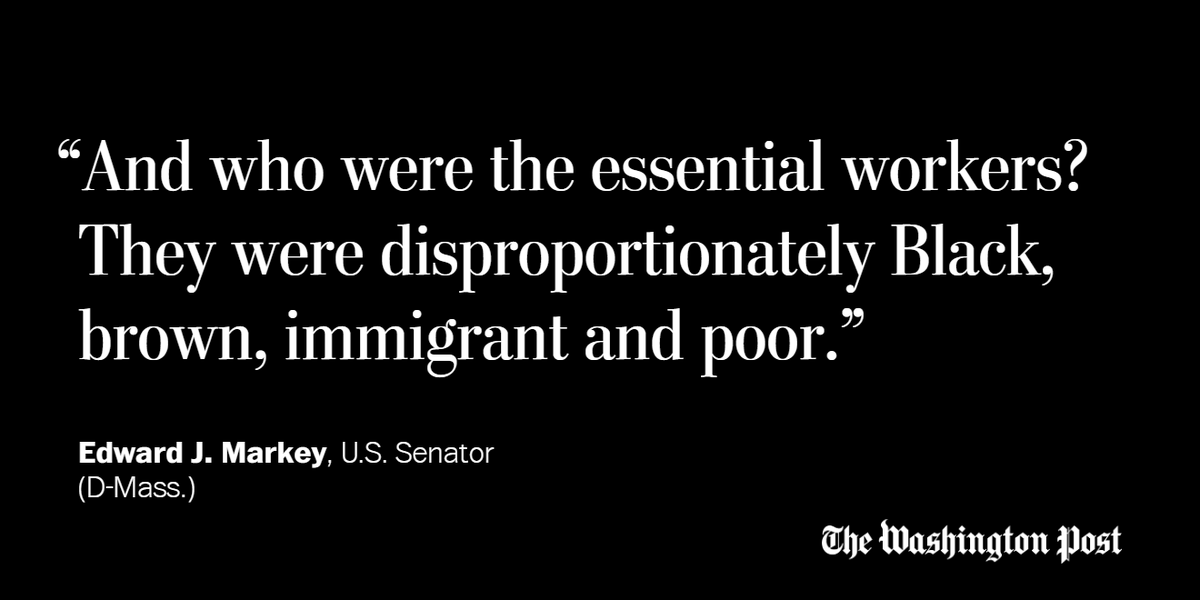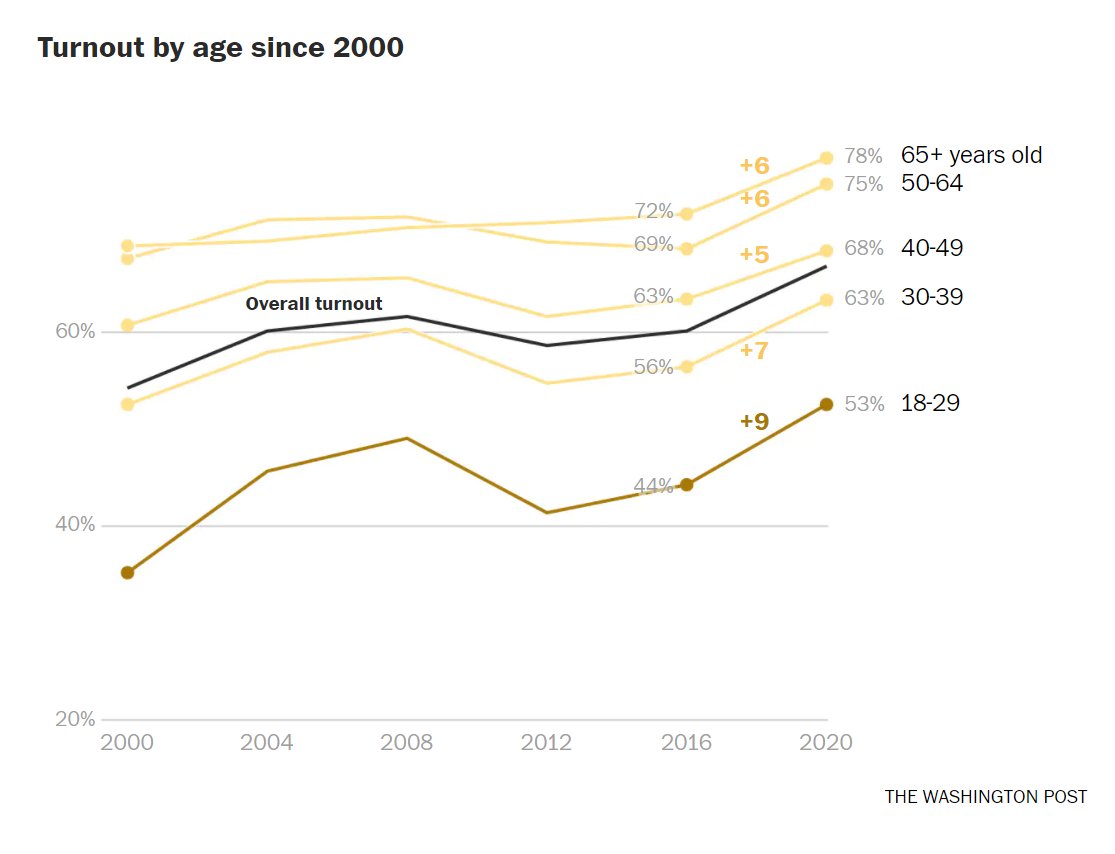
Public transportation ridership slid to historic lows at the start of the pandemic.
With lower ridership levels predicted until 2024, one proposal aims to serve the low-income passengers relying most heavily on public transit: Make it free.
wapo.st/3tVnVCM
With lower ridership levels predicted until 2024, one proposal aims to serve the low-income passengers relying most heavily on public transit: Make it free.
wapo.st/3tVnVCM
Workers who abandoned offices — and their commutes — are expected to return in lower numbers this fall as employers allow more flexible telecommuting arrangements. wapo.st/3tVnVCM
Left no other option but in-person work are service employees who disproportionately are people of color, according to data reviewed by The Washington Post. 

Sen. Edward J. Markey (D-Mass.) and Rep. Ayanna Pressley (D-Mass.) introduced the Freedom to Move Act, which would provide federal money to help transit make the switch to a fareless system.
“During the pandemic, a new word was created: essential workers,” Markey said.
“During the pandemic, a new word was created: essential workers,” Markey said.

Here’s how D.C., New York and San Francisco are weighing the concept of reducing fares for riders as the pandemic begins to recede, accompanied by audio clips of interviews with commuters in those cities ⏬
wapo.st/3tVnVCM
wapo.st/3tVnVCM
D.C. leaders have weighed the concept for years.
In 2019, D.C. Mayor Muriel E. Bowser launched a pilot aimed at studying free and reduced fares. Last year, council member Charles Allen proposed giving all residents a monthly $100 credit for public transportation.
In 2019, D.C. Mayor Muriel E. Bowser launched a pilot aimed at studying free and reduced fares. Last year, council member Charles Allen proposed giving all residents a monthly $100 credit for public transportation.
The New York Metropolitan Transportation Authority is the nation’s largest transit system.
MTA chief executive Patrick J. Foye said the agency has not explored the concept of free fares, but added that the MTA needs to improve awareness about its low-income discount program.
MTA chief executive Patrick J. Foye said the agency has not explored the concept of free fares, but added that the MTA needs to improve awareness about its low-income discount program.
San Francisco provides free transit to seniors, people with disabilities and youth ages 5 to 18 who are low- or moderate-income.
Two members of San Francisco’s Board of Supervisors in April proposed a pilot to expand the program to all residents free for three months.
Two members of San Francisco’s Board of Supervisors in April proposed a pilot to expand the program to all residents free for three months.
Momentum has spread for free public transit after the pandemic shone light on the working class and the buses and trains they rode.
A proposal in congress could fund the concept across the country.
wapo.st/3tVnVCM
A proposal in congress could fund the concept across the country.
wapo.st/3tVnVCM
The team used the Lidar scanner on the iPhone 12 and the SiteScape app to create the point cloud 3-D artwork, scanning transit rail car interiors in D.C., New York City and Oakland, Calif.
Audio and captions were placed in post-production.
Audio and captions were placed in post-production.
https://twitter.com/SethBlanchard/status/1394676580597833730?s=20
• • •
Missing some Tweet in this thread? You can try to
force a refresh











